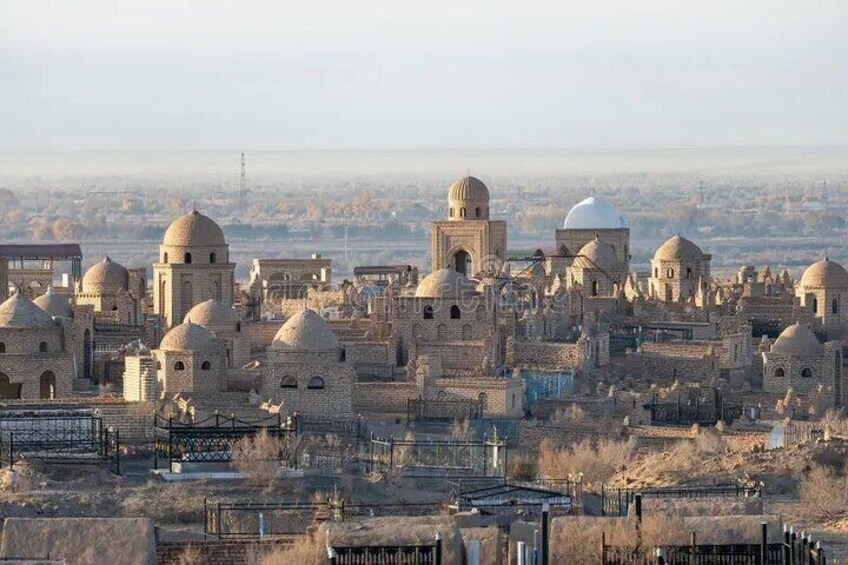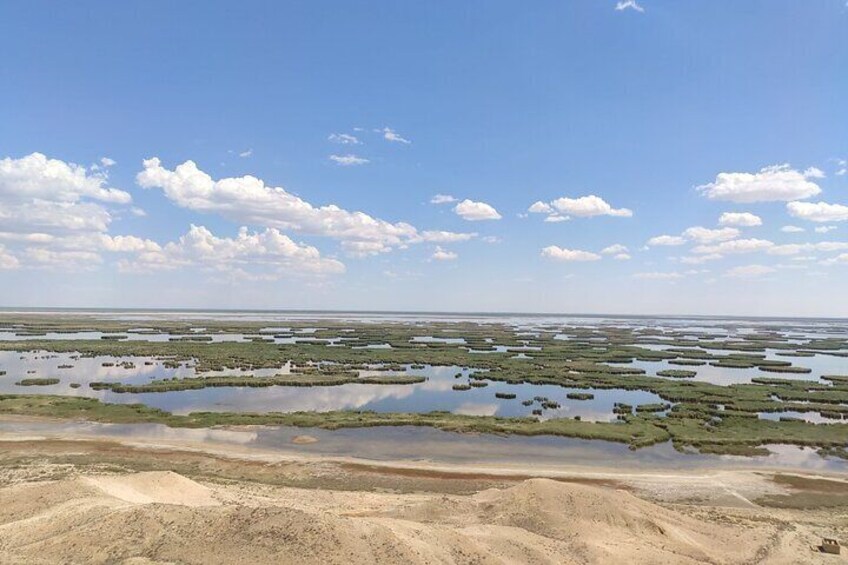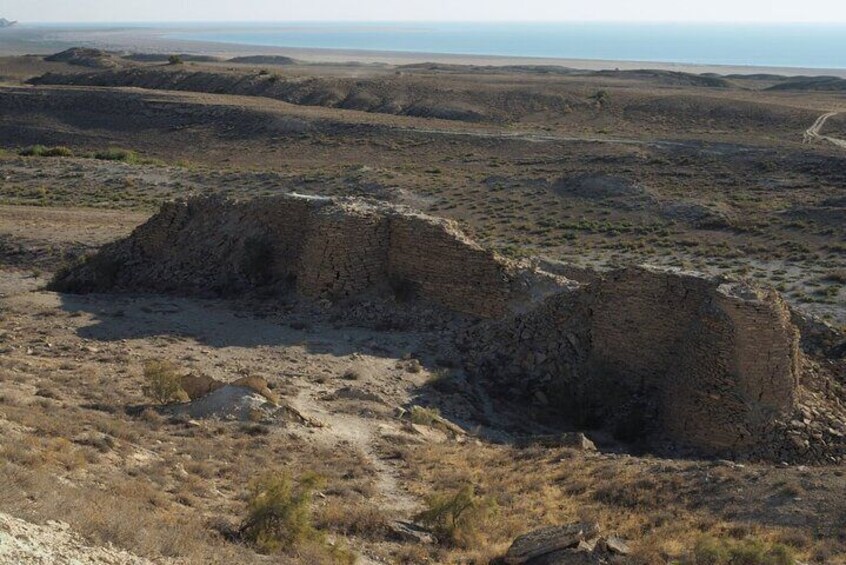Earn OneKeyCash when you sign in and book an activity





Aral Sea Tour with Khiva-Samarkand and Bukhara and Tashkent
Features
- Free cancellation available
- 9d
- Mobile voucher
- Instant confirmation
- Selective hotel pickup
- Multiple languages
Overview
Uzbekistan is not only the heart of Central Asia but also a true reflection of culture, beauty, historical heritage, and national values at their finest. The rich history of our nation has been carefully preserved in Samarkand, Bukhara, Khiva, Tashkent, and other cities. We offer you an authentic journey through time, introducing you to our history, traditions, and local charm with guided tours to the most significant historical and cultural sites.
Our tour package includes accommodations in 3-4*hotels, breakfast, train/air(in some) tickets, transfers, transportation services, excursions and entrance tickets to the historical monuments. However, what truly sets us apart is our flexibility—we customize tours based on travelers' preferences, ensuring a personalized experience tailored to your plans and requirements.
We prioritize the wishes of our guests, providing high-quality, comfortable, and authentic travel experiences. Visit Uzbekistan and explore its wonders with Assalam Travel!
Activity location
- Nukus
- Nukus, Uzbekistan
Meeting/Redemption Point
- Nukus
- Nukus, Uzbekistan
Check availability
Uzbekistan Adventure through Tashkent Nukus Muynak and Aral Sea in Multilingual
- 9d
- Opening hours: Wed 8:00am-6:00pm
- English
Pickup included
What's included, what's not
- Air Tickets
- International flights
- Personal expenses
Know before you book
- Wheelchair accessible
- Infants and small children can ride in a pram or stroller
- Public transportation options are available nearby
- Specialized infant seats are available
- Transportation options are wheelchair accessible
- All areas and surfaces are wheelchair accessible
- Suitable for all physical fitness levels
Activity itinerary
Day 1: TASHKENT / NUKUS
- 2 stops
- Meals: breakfast, lunch, snacks
- Accommodation: Travelers stay in Yurt Camps in the shores of Aral Sea, Moynak
Nukus
- 1d
The Karakalpakstan State Museum of Art named after I.V. Savitsky
- 1h
- Admission ticket included
Day 2: Aral Sea
- 3 stops
- Meals: breakfast, lunch, snacks
- Accommodation: Travelers stay in Yurt Camps in the shores of Aral Sea, Moynak
The Aral Sea
- 3h
- Admission ticket included
Aral Karakum Desert
- 2h
- Admission ticket included
Ustyurt Plateau National Preserve
- 2h
- Admission ticket included
Day 3: Nukus - Khiva
- 1 stop
- Meals: breakfast
- Accommodation: Travelers will stay in comfortable 3-4* hotels located near to the historical sites.
Khiva
- 1d
Day 4: Khiva
- 1 stop
- Meals: breakfast
- Accommodation: Travelers will stay in comfortable 3-4* hotels located near to the historical sites.
Itchan Kala
- 6h
- Admission ticket included
Day 5: Khiva - Bukhara
- 1 stop
- Meals: breakfast
- Accommodation: Travelers will stay in comfortable 3-4* hotels located near to the historical sites.
Bukhara
- 1d
Day 6: Bukhara
- 4 stops
- Meals: breakfast
- Accommodation: Travelers will stay in comfortable 3-4* hotels located near to the historical sites.
Ark of Bukhara
- 1h
- Admission ticket included
Samanid Mausoleum
- 1h
- Admission ticket included
Poi Kalyan Mosque
- 1h
- Admission ticket included
Lyab-i-Hauz
- 1h
- Admission ticket included
Day 7: Bukhara - Samarkand
- 5 stops
- Meals: breakfast
- Accommodation: Travelers will stay in comfortable 3-4* hotels located near to the historical sites.
Palace of Moon-like Stars (Sitorai-Mokhi-Khosa)
- 1h
- Admission ticket included
Bakhautdin Naqsband Mausoleum
- 1h
- Admission ticket included
Registan
- 1h
- Admission ticket included
Gur Emir Mausoleum
- 1h
- Admission ticket included
Bibi Khanym Mosque
- 1h
- Admission ticket included
Day 8: Samarkand - Tashkent
- 3 stops
- Meals: breakfast
- Accommodation: Travelers will stay in comfortable 3-4* hotels located near to the historical sites.
Shah-i-Zinda
- 1h
- Admission ticket included
Ulugh Beg Observatory
- 1h
- Admission ticket included
Tashkent
- 1d
Day 9: Tashkent
- 6 stops
- Meals: breakfast
- Accommodation: Travelers will stay in comfortable 3-4* hotels located near to the historical sites.
Ensemble Hazrati Imam
- 1h
- Admission ticket included
Chorsu Bazaar
- 1h
- Admission ticket included
Independence Square (Mustakillik Square)
- 45m
- Admission ticket included
Metro Taschkent
- 30m
- Admission ticket included
Amir Timur Museum
- 1h
- Admission ticket included
Minor Mosque
- 30m
- Admission ticket included
Location
Activity location
- Nukus
- Nukus, Uzbekistan
Meeting/Redemption Point
- Nukus
- Nukus, Uzbekistan